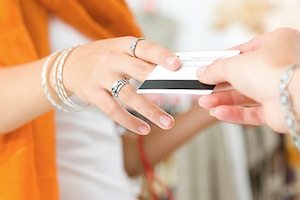Recently I have heard of retailers using modern technology for an old payment method: cash on delivery. Credit card payments can now be accepted on small terminals wherever there’s a mobile phone signal. In the U.K., Europe, and the U.S., there are a growing number of inexpensive chip and pin readers that connect to a mobile phone. PayPal, for instance, is a supplier.
This means that customers can pay for the goods at their door. They can inspect the goods before paying for them with, in this case, their credit cards. There are many advantages for both the retailer and the customer. For instance, the customer can be assured that the goods are genuine and the retailer is legitimate. The retailer can likewise be assured that the customer is real, that the goods are delivered safely, nothing is lost or damaged in transit, and the customer has accepted the goods and are less likely to return them.
Small retailers can do this themselves in a local area by scheduling a delivery run several times a week and booking delivery appointments with customers. I suspect that delivery companies may start offering this service — processing a credit card on a mobile device — and larger retailers may likewise start doing this. This is an extension of a “click and collect” service that has a growing popularity in the U.K., wherein consumers purchase products online and pick them up at a physical store.
Many benefits
Payment on delivery will be more attractive for those retailers that sell high value items that traditionally have a higher delivery loss rate, such as smartphones, tablets, and computers. It can also be used to increase sales for goods that do not traditionally sell well on the Internet, such as jewelry, which shoppers want to see and feel before they buy.
Another significant target market for a payment-on-delivery service is clothing. This area of online retailing suffers from a high return rate due to people buying several items, trying them on, and then returning the ones they do not want. Payment on delivery could eliminate this loss if the retailer is prepared to wait whilst the customer tries the clothes on.
The service could eliminate transit losses, and reduces returns overall (and poorly packaged returns, in particular). It also provides the precious opportunity to talk to customers, to establish a better relationship and gather invaluable intelligence, such as what they like and don’t like, what they are looking for, what else they may buy, and so on. It could increase your chance of repeat business.
Clearly payment on delivery is not suitable for many businesses and many goods. But don’t dismiss it out of hand. You don’t have to deliver every day. You could accumulate several days worth of orders, to minimize delivery costs. Most customers, properly informed, will be happy to wait a couple of days in return for a guaranteed, pre-booked delivery slot. For those customers in a hurry, you could always charge a premium for more prompt delivery.
By offering this service for nearby customers, you have a unique offering that may help you sell more.
